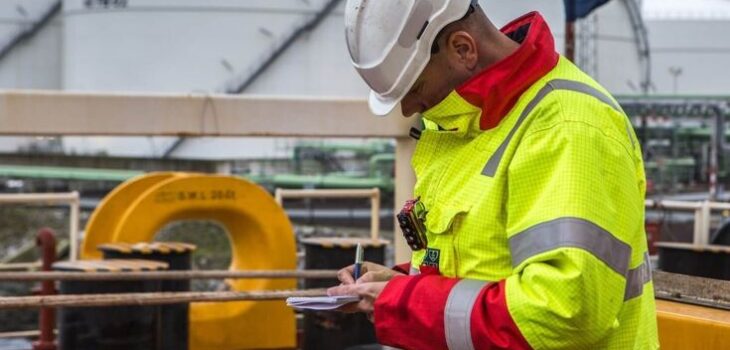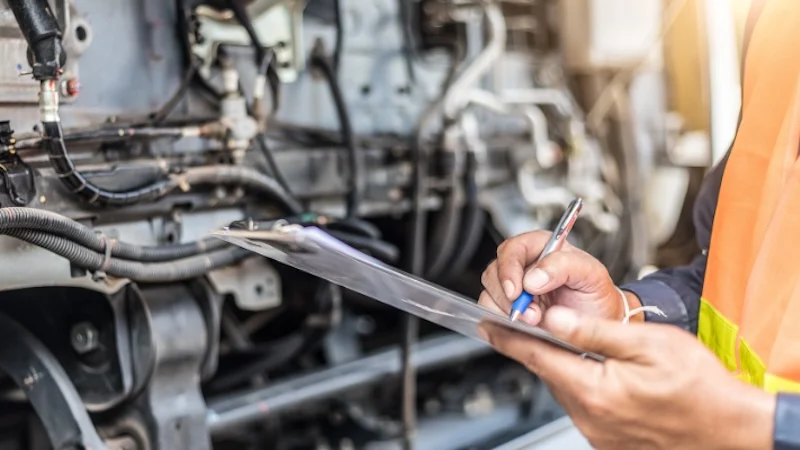 Technology
Technology
What Happens If You Do Not Get a TM44…
What is a TM44 Inspection?
In the United Kingdom, maintaining energy efficiency in commercial buildings is not just a recommendation—it’s a legal requirement. One key regulation is the TM44 inspection, also known as the Air Conditioning Energy Assessment. This inspection is designed to ensure that air conditioning systems over a specific size operate efficiently and sustainably. But what happens if building owners or managers fail to arrange a TM44 inspection? Let’s dive in.
What is a TM44 Inspection?
What is a TM44 Inspection? The TM44 inspection is a mandatory energy assessment for air conditioning systems with a total capacity greater than 12 kilowatts (kW) in commercial premises. Introduced under the Energy Performance of Buildings Directive (EPBD), its objective is to enhance energy efficiency and minimise environmental impact. During the inspection, a qualified energy assessor evaluates the system’s performance, checks for energy wastage, and provides recommendations to optimise operation.
The report generated from this inspection must be kept on record and made available for inspection by authorities.
Legal Requirement for TM44 Inspections
Under UK regulations, businesses operating air conditioning systems with a total output exceeding 12 kW are required to have a TM44 inspection conducted at least once every five years. This requirement applies to a wide range of commercial buildings, including offices, shops, restaurants, schools, and public buildings.
What Happens If You Don’t Get a TM44 Inspection?
Financial Penalties and Fines
One of the most immediate consequences of not obtaining a TM44 inspection is the risk of receiving a financial penalty. The Environment Agency and local authorities enforce this regulation and can impose fines on businesses that fail to comply. These fines are designed to encourage companies to fulfil their energy efficiency obligations and contribute to national environmental objectives.
Increased Energy Costs
Without a TM44 inspection, air conditioning systems may run inefficiently, wasting energy and increasing operational costs. The inspection helps identify issues such as leaks, poor maintenance, or outdated equipment that drain energy unnecessarily.
By neglecting this assessment, building owners risk incurring higher energy bills, which can accumulate significantly over time.
Environmental Impact
The TM44 inspection is part of broader efforts to reduce carbon emissions and combat climate change. Inefficient air conditioning systems contribute to higher greenhouse gas emissions due to excessive energy consumption.
Failing to conduct the inspection means missing out on opportunities to improve efficiency and reduce your building’s carbon footprint, which goes against the UK’s sustainability targets.
Negative Impact on Building Occupants and Business Reputation
A poorly maintained air conditioning system can negatively impact indoor air quality and comfort levels, resulting in an uncomfortable environment for employees, customers, and visitors. This may impact employee efficiency, client experience, and the overall success of your business.
Additionally, failing to meet legal requirements can harm your company’s credibility and public image. Customers and partners are increasingly aware of environmental responsibilities and may avoid businesses that neglect their sustainability obligations.

Potential Legal Action
In extreme cases, persistent failure to comply with TM44 requirements can lead to legal action. This could involve prosecution, court orders to undertake necessary inspections, or additional fines.
Legal proceedings are costly and time-consuming, diverting resources from your core business activities.
How to Avoid These Consequences
Schedule Regular TM44 Inspections
Scheduling inspections well in advance helps avoid last-minute rushes and penalties.
Work with Qualified Assessors
Select qualified and accredited energy professionals to conduct your TM44 assessments. Skilled professionals provide accurate reports and practical recommendations to improve system efficiency.
Implement Recommended Improvements
Take the inspection recommendations seriously and invest in necessary maintenance or upgrades. This not only keeps you compliant but also reduces energy costs and enhances system performance.
Maintain Proper Records
Maintain comprehensive documentation of every TM44 inspection, report, and related maintenance work. Regulators may request these documents during compliance checks.
Benefits of Getting a TM44 Inspection
Beyond avoiding penalties, TM44 inspections bring several positive outcomes:
Energy Savings:
Detecting and addressing inefficiencies can significantly reduce energy usage and lower costs.
Extended Equipment Life:
Regular assessments help catch problems early, extending the lifespan of your air conditioning units.
Environmental Responsibility:
Compliance demonstrates your commitment to sustainability and corporate social responsibility.
Improved Comfort:
Efficient systems provide better temperature control and air quality for occupants.
Conclusion:
The TM44 inspection and TM44 Air Conditioning Inspections are not merely a bureaucratic formality; it is a vital component in ensuring energy-efficient and environmentally responsible building management. Failing to get a TM44 inspection can result in hefty fines, increased energy costs, environmental harm, and damage to your business reputation.
By prioritising TM44 compliance, businesses can save money, reduce their carbon footprint, and provide a healthier environment for occupants. If you haven’t scheduled your TM44 inspection yet, now is the time to take action and remain compliant with the law.
Read more blogs at Vibrantlivingblog.









